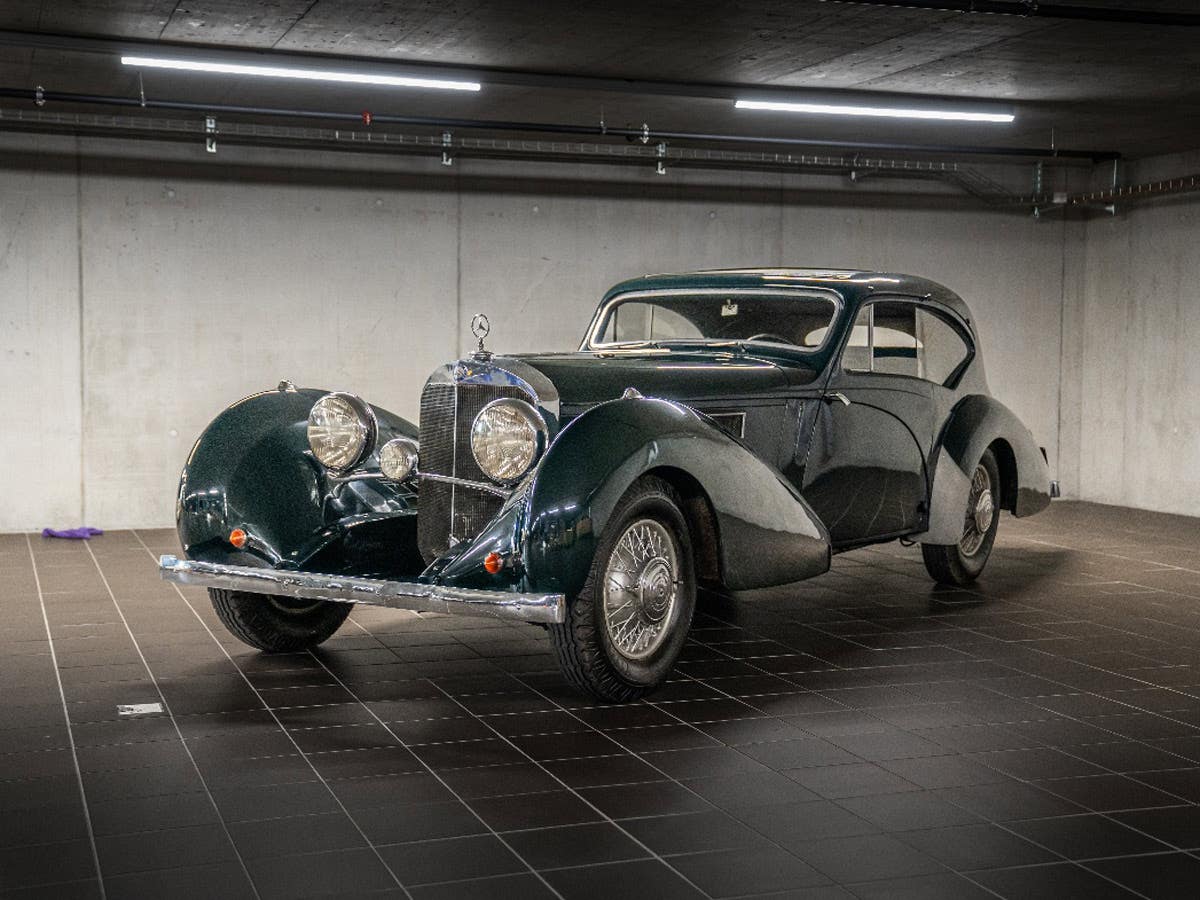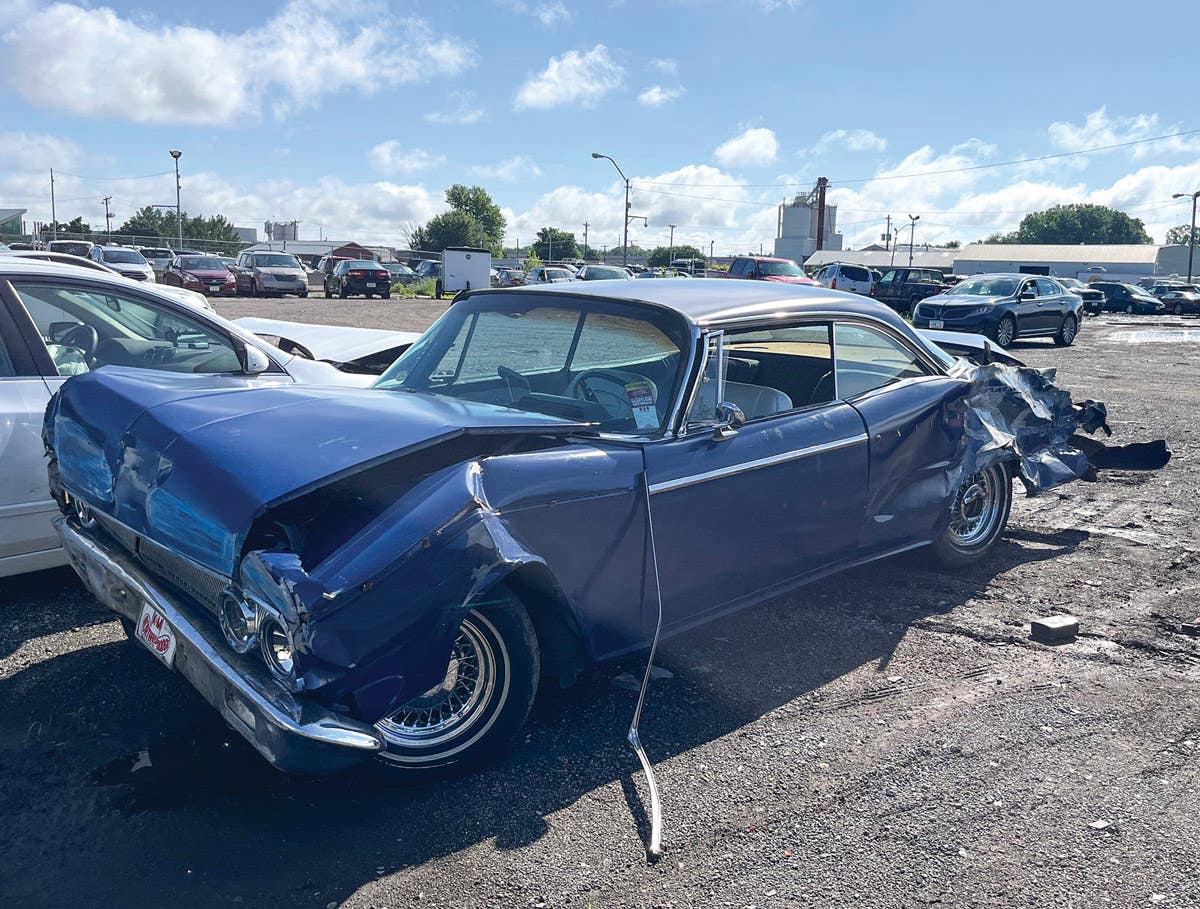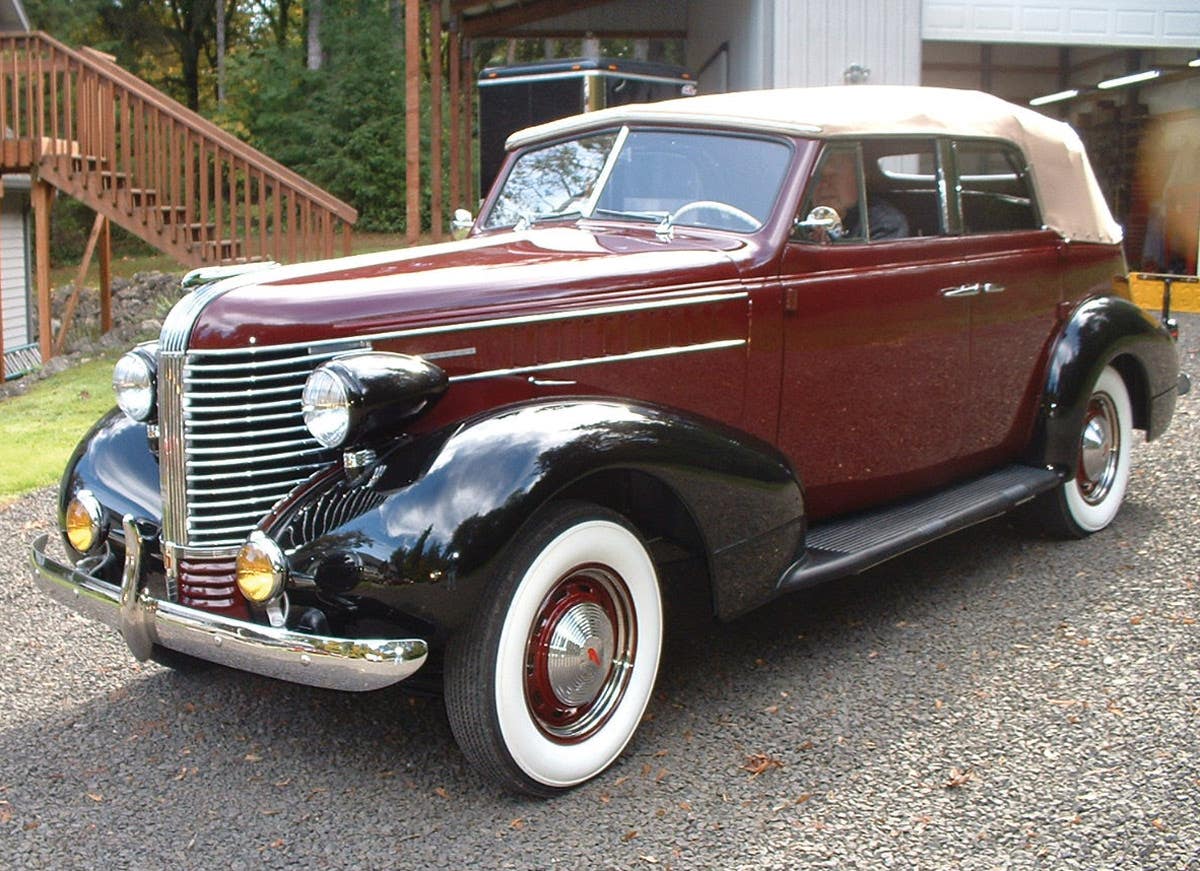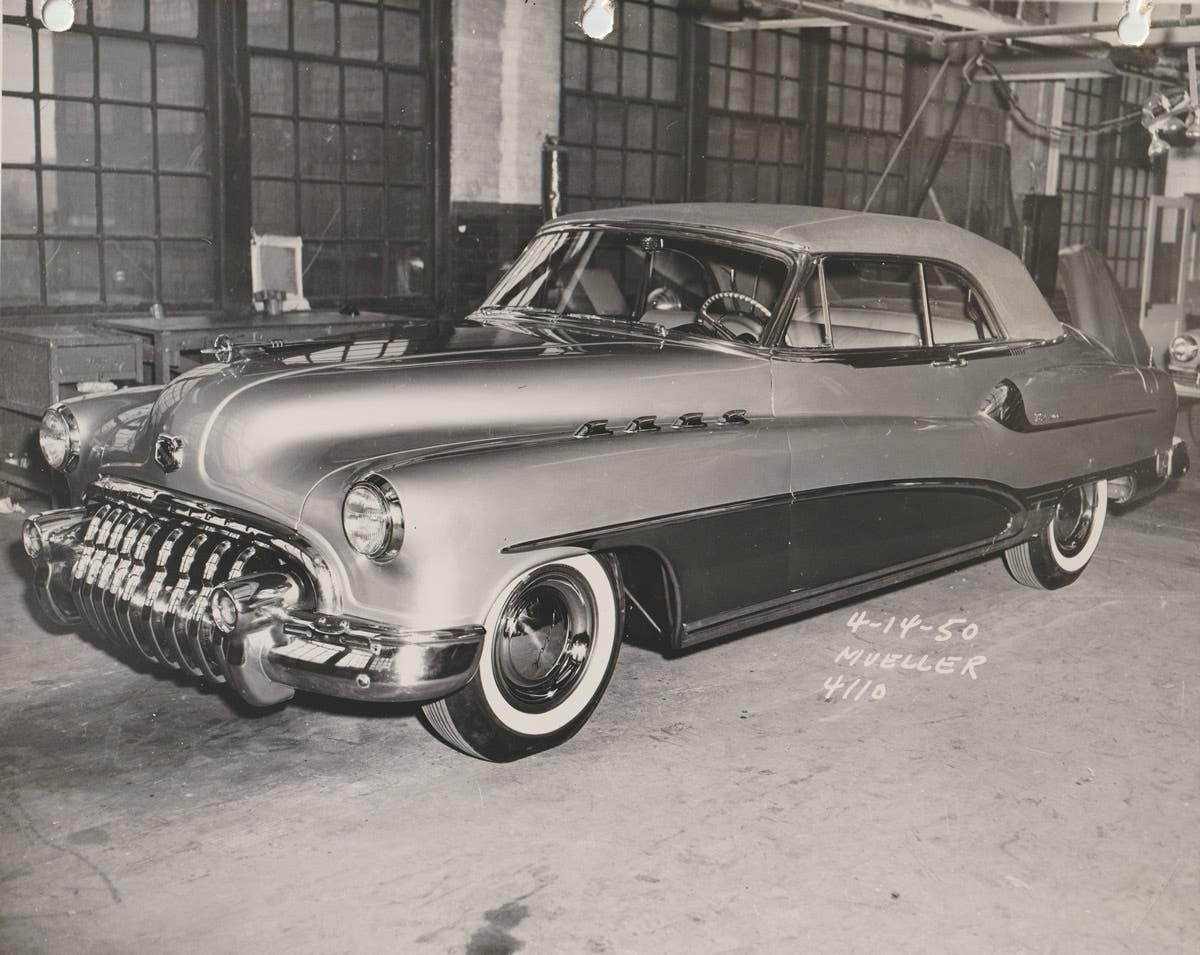Dusty Delahaye a barn-find dream
This 1949 Delahaye is a rare, unrestored survivor. It was originally sold new in Morocco and eventually came to the U.S. when it was bought by a serviceman. By Lisa…
This 1949 Delahaye is a rare, unrestored survivor. It was originally sold new in Morocco and eventually came to the U.S. when it was bought by a serviceman.
By Lisa Peterson, Bob DeKorne and John Lyons
As the barn door slowly opened, a ray of sun lit up a rare and beautiful car that had been resting quietly for decades, waiting to be rediscovered. It was exactly what every car guy dreams.
Old Cars Weekly subscriber Jeff Carter, owner of JC Auto Restoration, lived the dream when he came upon an exotic European automobile a little out of his area of expertise. As an authority on the restoration of Chrysler Corp. vehicles for more than 30 years, Carter has operated JC Auto Restoration and enjoyed the search for Chrysler cars and parts. A few years ago, Carter followed a lead for several Chrysler 300s tucked away on a farm in eastern Washington State. He and his wife, Lisa, followed up on the lead, and not only did they find and purchase five Chryslers, but they also found something even more extraordinary.
While examining the Chrysler 300s, they were invited to look inside the seller’s barn. As the owner’s wife unlocked the door, the rear end of what was undoubtedly a significant European sports car came into view with the words “Delahaye Competition” proudly displayed on the decklid. There, before their eyes, rested a dusty 1949 Delahaye 135M four-seat cabriolet with beautiful custom coachwork by Henri Chapron. So complete was the Delahaye, it retained all its bits down to the linkage on its three carburetors.
French connection
Émile Delahaye, the founder of the Delahaye Co., was born in Tours, France, in 1843. As a mechanical engineer, Delahaye worked for several small companies before purchasing his own business in which he fabricated internal combustion engines. At the age of 51, he built his own car.
Delahaye was one of the first to use racing as a means to promote his vehicles. In 1896, Émile Delahaye entered the Paris-Marseilles-Paris race as an owner-driver. The results were astounding, and the demand for Delahaye vehicles was strong, which necessitated opening a second factory.
Due to failing health, Émile Delahaye retired in 1901; he sold his company to close friends Georges Morane and Léon Desmarais. Management control was then passed onto Charles Weiffenbach, a young engineer.
At the time, automotive racing was new, exciting and paramount to a manufacturer’s success. Vehicle sales were definitely stimulated by performance on the race track. However, Weiffenbach had a more conservative philosophy. His main focus and priority was to build dependable utility vehicles. These early Delahayes were not only reliable as commercial and farm vehicles, but also saw extensive service during World War I. After the war, Delahaye continued to manufacture solid, but conservative — some would say boring — automobiles and sales began to decline. It appeared the company would quietly slide into oblivion.
In 1932, Weiffenbach made the decision to radically shift the focus of the company. He hired a young hotshot engineer, Jean François, and gave him free reign to design and build elegant, beautiful and powerful automobiles. First shown in 1933 at the Paris Auto Salon, the new Delahayes captured the interest of those who seemed unaffected by the Great Depression.
There were several models and body styles of the Delahaye 135 built from 1935-’50, with a hiatus during World War II. The 135 is considered to be one of the most best-remembered and prestigious vehicles produced by the company.
Well-known coachbuilders such as Henri Chapron, Figoni et Falaschi, Letourneur & Marchand, Saoutchik, Franay and Guilloré were tasked with outfitting the 135 model with coachwork. Many feel that Henri Chapron, the coachbuilder of this car, created the most elegant designs. No two 135s were exactly alike, and with a sleek, low-slung chassis as a starting point, Delahayes with coachwork by these famous builders won numerous awards for styling and design.
The 3.2-liter, six-cylinder engine with either single or triple Solex carburetors produced an impressive amount of power, ranging from 96 to 135 hp over its 15-year model run.
Dusting off the Delahaye
With this significant history, it is no wonder the Carters were very excited about the Delahaye they had seen. However, the did not follow the couple home at the time they purchased several Chryslers from its owner.
Over the subsequent years, the couple maintained close contact with the owners of the Delahaye, developing a long-lasting friendship. This past spring, they got a phone call asking, “Would you be interested in purchasing the Delahaye?” What other answer was there? This was the opportunity of a lifetime.
The pair travelled back to the farm to carefully photograph and document the vehicle. Returning to Seattle, Lisa began researching the history of the Delahaye. She learned that it was sold new in Morocco and still sported its original Moroccan license plate. In 1957, an Air Force pilot serving in Morocco traded in his 1955 Lincoln convertible for the Delahaye. She interviewed the now 81-year-old veteran twice, and he fondly recalled the car. He told her that he bought it with almost no miles on it; the car had been in storage for most of its life and was essentially a brand-new car. He recalled that he “felt like a sheikh driving all across Morocco!”
When the veteran’s service was completed, he had the car shipped to New Orleans and eventually drove it to California, then to Spokane, Wash. It was his only car, so he continued to drive it for several more years before eventually trading it to the Empire Lincoln Mercury dealer in Spokane in 1964. Its next owner was a jeweler from a small town in eastern Washington who kept it for a couple of years, then traded it in to Don Rohrer’s Select Cars in Spokane.
In 1966, Rohrer sold it to the owner of the farm where it remained until 2011. The car was driven very sparingly until 1971 when it was parked in a garage for safekeeping with only 61,397 miles on the odometer. It remained in the garage until 1976, when it was moved to the barn where it remained undisturbed until 2011. The car even received a light dusting of volcanic ash from the Mount St. Helens eruption on May 18, 1980.
This Delahaye 135M is significant, not only because of what it is, but because it has survived in such an original state. This 1949 Delahaye was well-optioned with three down-draft Solex carburetors, the 135-hp engine (3,495cc), and the Cotal electromagnetic transmission. It is equipped exactly as it left Henri Chapron’s carrosserie. Other than an additional coat of grey-blue paint that undoubtedly was sprayed after its time in the hot desert sun, the car is original. The red leather interior is intact, all of the many instruments are present and the engine compartment is completely unmolested.
On the firewall are two number plates that verify the significance of this car. The first is the Delahaye chassis number (801005); the second is the Chapron coachwork number (6758).
The Delahaye also came with its original owner’s manual, complete with hand-written notes translating the French into English; a placard from the Spokane Motor Fair in 1962; and photographs of the car over the years.
The new owners have decided to offer the car to a European car afiscianado, the Delahaye will be sold at the Auburn Auction Main Event on Sept. 3. More details are available at www.WWGauctions.com.
The new owner and custodian of this rare automobile will have the option of either preserving the car as an outstanding original example, or restoring it to its former glory. In either case, this Delahaye is a stunning example of extraordinary craftsmanship, proud racing heritage and elegant beauty.
The authors wish to express special thanks to Noelle Chapron for help preparing this story.
Want to read about more barn finds? Check out Lost and Found: Great Barn Finds & Other Automotive Discoveries
If you don't subscribe to Old Cars Weekly magazine, you're missing out on the only weekly magazine in the car hobby. And we'll deliver 54 issues a year right to your mailbox every week for less than the price of a oil change! Click here to see what you're missing with Old Cars Weekly!
More Resources for Car Collectors:
- Classic car price guides, research, books, back issues of Old Cars Weekly & more
- Get expert restoration advice for your classic car
- Get car pricing, data and history all in one place
- Sign up for Old Cars Weekly's FREE email newsletter
- Need to buy or sell your classic car? Looking for parts or memorabilia? Search our huge online classified marketplace







